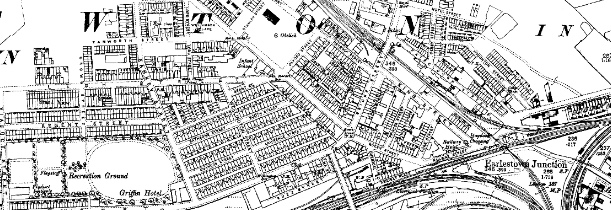What is A Desk Study Report?
The Phase I Desk Study (also known as a preliminary Risk Assessment) is an essential part of the site investigation process, it is a literature review of available information (historical O.S. maps, environmental data, aerial plates, planning history, geological maps, BGS Borehole Section Sheets, Environment Agency data etc.) and is intended to provide information on whether there is any potential for the site to be impacted by contamination rising from the past use of the site or from nearby land.
Unlike many other consultancies, all desk studies will contain a walkover survey of the site included in the fee, as current guidance (BS10175:2011+A1:2013, BS5930:1999+A2:2010, CLR 11 etc.) states a walkover survey is required as part of a desk study report.
This information is used to create a Conceptual Model for the site, which allows for a more accurate and cost effective site investigation. Having a desk study report undertaken prior to the purchase of a site would highlight any potential liabilities, which could reduce the value of the site or increase the costs of any future development.
Demeter Environmental will prepare a desk study as the first stage of any assessment into land contamination and should be undertaken before any intrusive works. The benefits of commissioning the desk study prior to the intrusive works are numerous:
- Allows areas where there is potential issues (tanks etc.) to be targeted, ensuring efficient use of resources;
- Allows for the early identification of potential geohazards;
- Allows for the formulation of a geological model of the site;
- Avoids site investigation where there are no potential issues/problems;
- Identifies areas of potential contamination as well as the potential contaminants;
- Can provide an early warning of possible delays and abnormal site conditions.
Information is gathered from a variety of sources (historical O.S. maps, regulatory bodies etc.) from which it is possible to identify any potential sources of contamination and potentially contaminating industrial/commercial activities.
A phase 1 study culminates in the production of a risk assessment identifying, in the form of a conceptual model, the links between contaminant source, pollution pathways, and receptors.
Our desk study reports are compliant with question 15 of APP1 and are designed to satisfy the requirements of planning conditions issued by local authorities.
If the desk study confirms the absence of any pollution linkages, a conceptual model cannot be created, no further works will be required and the associated planning requirements can be satisfied at this stage. Our desk study reports are designed to provide the best value approach of satisfying planning conditions, ensuring that the conditions can be discharged with minimum cost.
Where a Phase II investigation is recommended in the Phase I Desk Study report, the proposals are prepared so that the reader can fully understand exactly what the scope of the investigation will include.
Contents of a Desk Study Report
Our Phase I Desk Study Reports contain information relating to the site history, environmental setting, geology etc. obtained from multiple sources. Our desk study report includes the following:
- Review of historical Ordnance Survey maps;
- Review of environmental data provided by environmental data suppliers ;
- Review of Environment Agency data maps;
- Walkover survey of the site – site walkovers are undertaken on ALL sites;
- Where possible, hand held boreholes will be excavated by auger, where an excavator is provided, trial pits can be excavated as part of the walkover survey;
- Review of published geology (1:50,000 maps);
- Assessment of risk from coal workings based on Coal Authority Maps;
- Assessment of risk from radon;
- Assessment of data available from the BGS;
- A full preliminarily qualitative risk assessment for the site;
- Development of a preliminarily conceptual model (containing all applicable sources, pathways and receptors) for the site based on collated data and preliminary qualitative risk assessment;
- Development of detailed proposals for a Phase II site investigation as well as proposals for remediation in-lieu of intrusive investigation (where appropriate);
- No additional fees will be raised for any subsequent liaison with the local planning authority (LPA) until the conclusions of the report are accepted by the Local Authority.
On occasion the following information will be required (charges at cost);
- Review of data provided by local authority;
- Review of data provided by petroleum officer.
Unfortunately the majority of other consultants stop at the conceptual model stage, leaving the development of a Phase II investigation strategy (if required) and obtaining the agreement of the LPA to other parties. Our service is complete once the LPA have approved the desk study report.
Once the report has been internally reviewed and authorised a draft copy will be sent to the client and agent, alongside a quotation for the works proposed in the study. Once all interested parties are happy with the report, the final report will be issued by email.
How Much Does A Desk Study Report Cost?
Our fee for a desk study report is dependent on the size of the site being studied, and its location. Prices range from £680+VAT (£612+VAT if payment is not made on instruction).
For free impartial advice of how to meet the requirements of the contaminated land conditions please call Paul on 0151 521 2539 or by e-mail.

